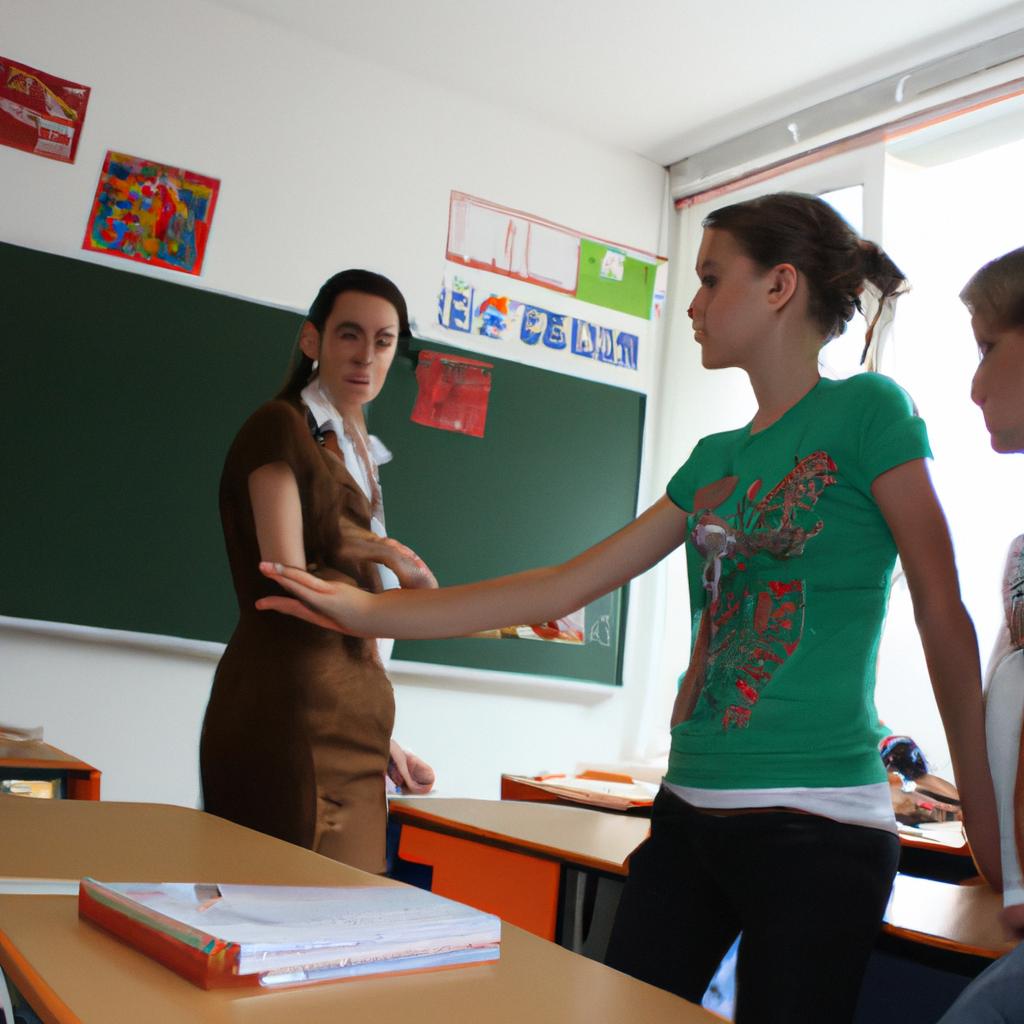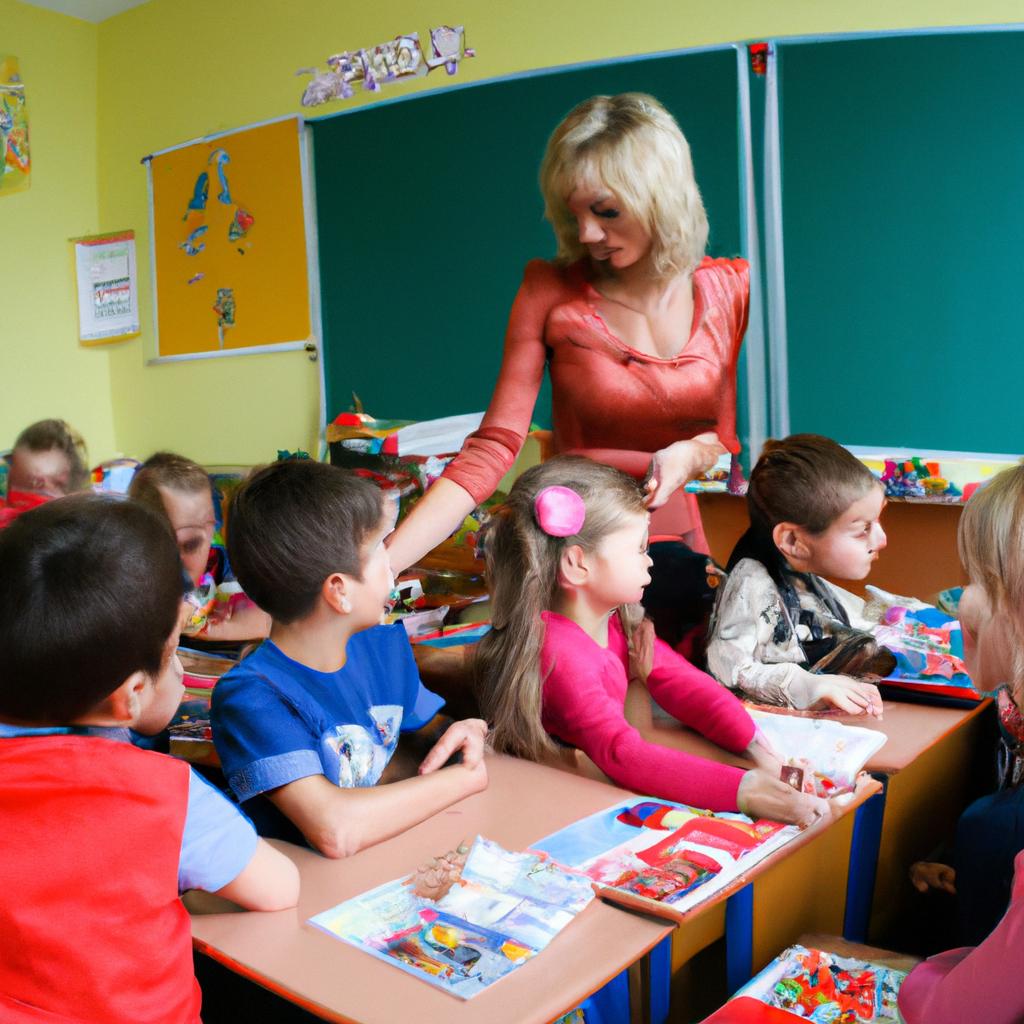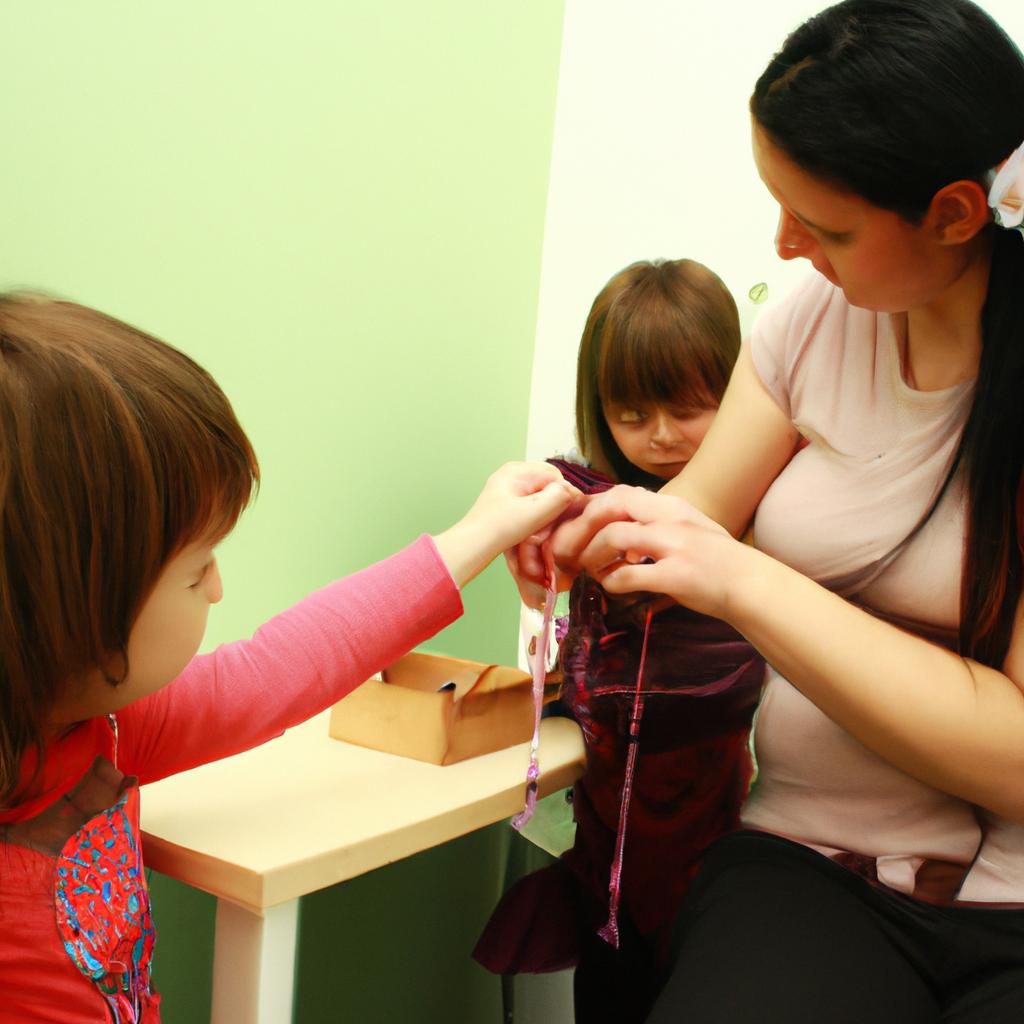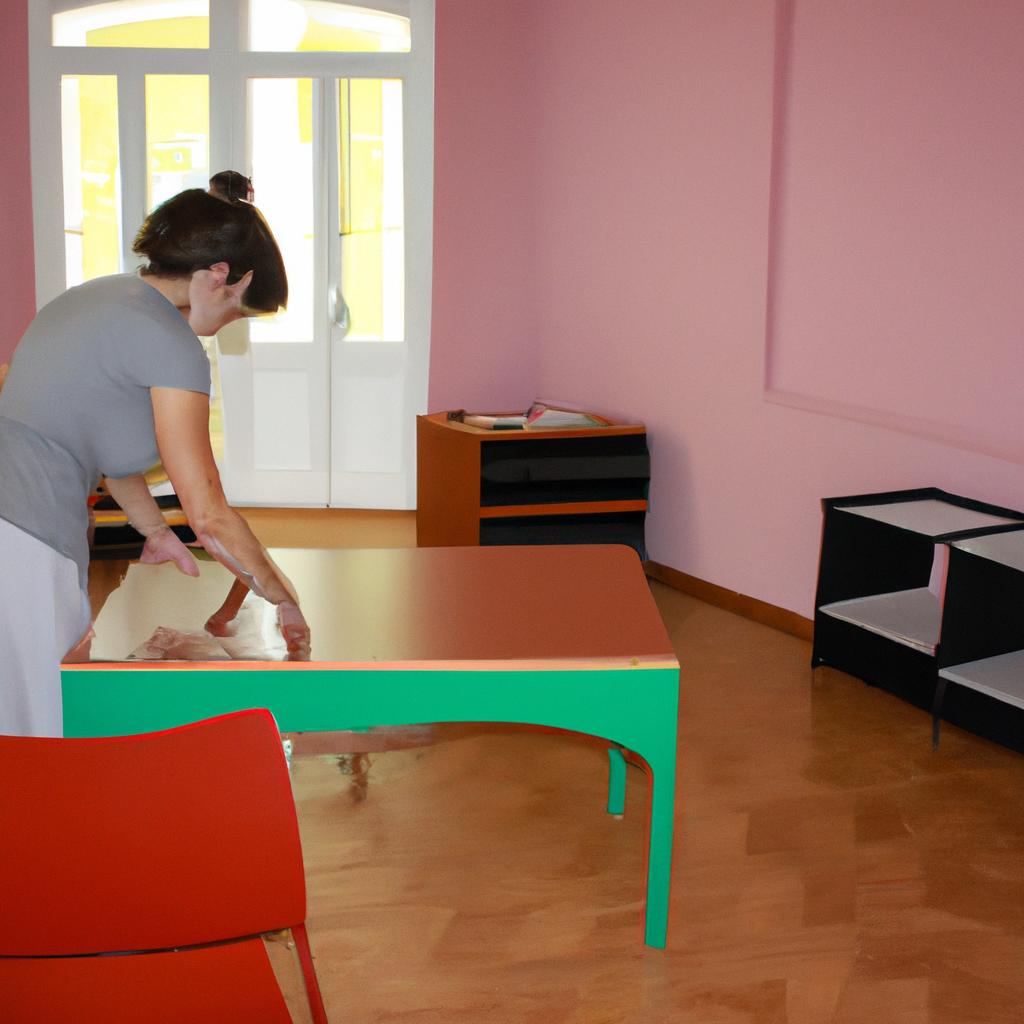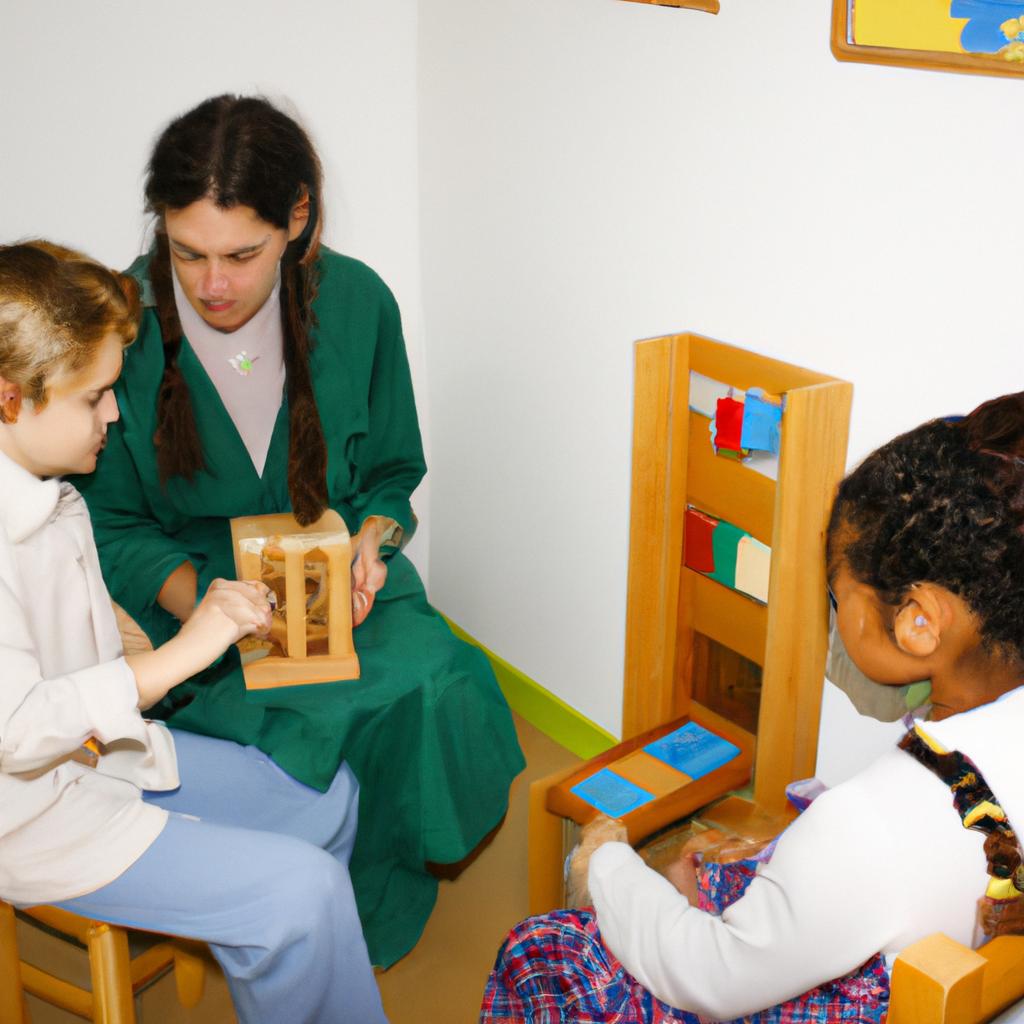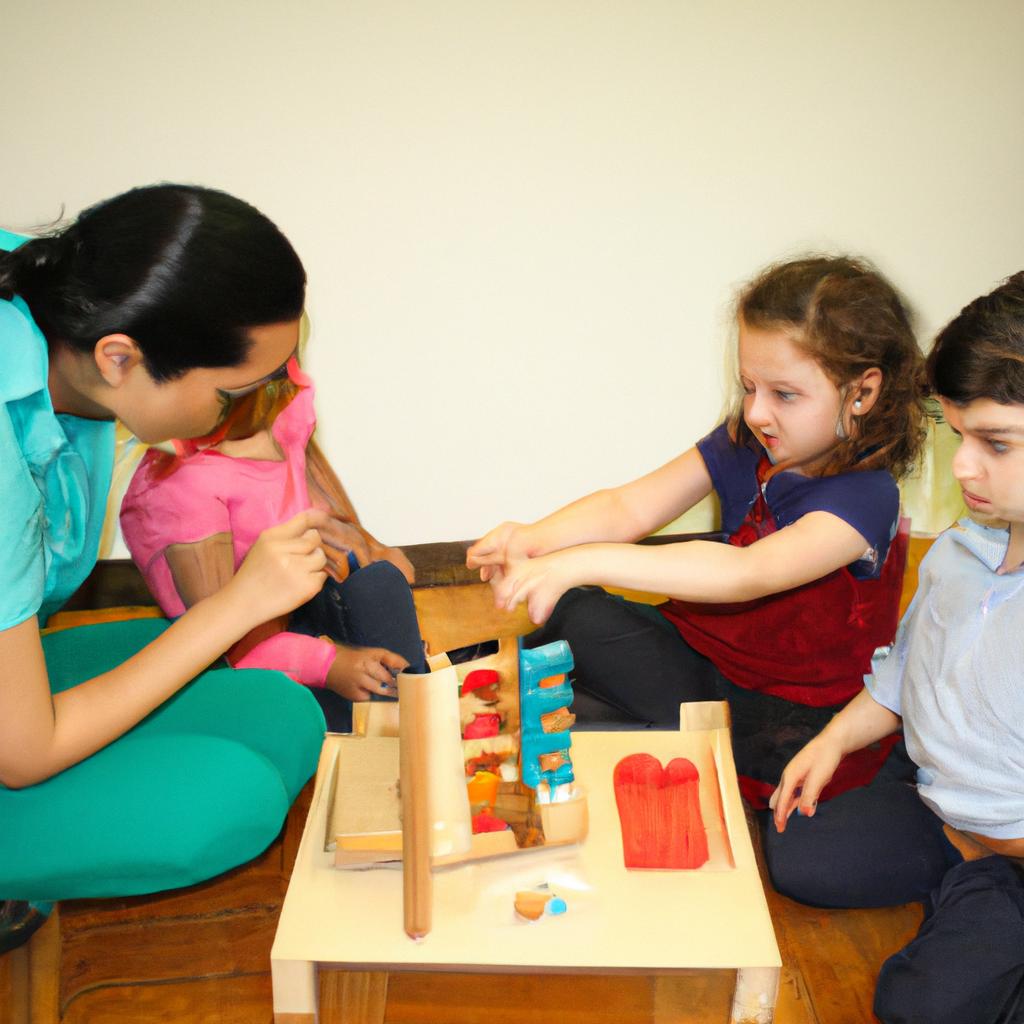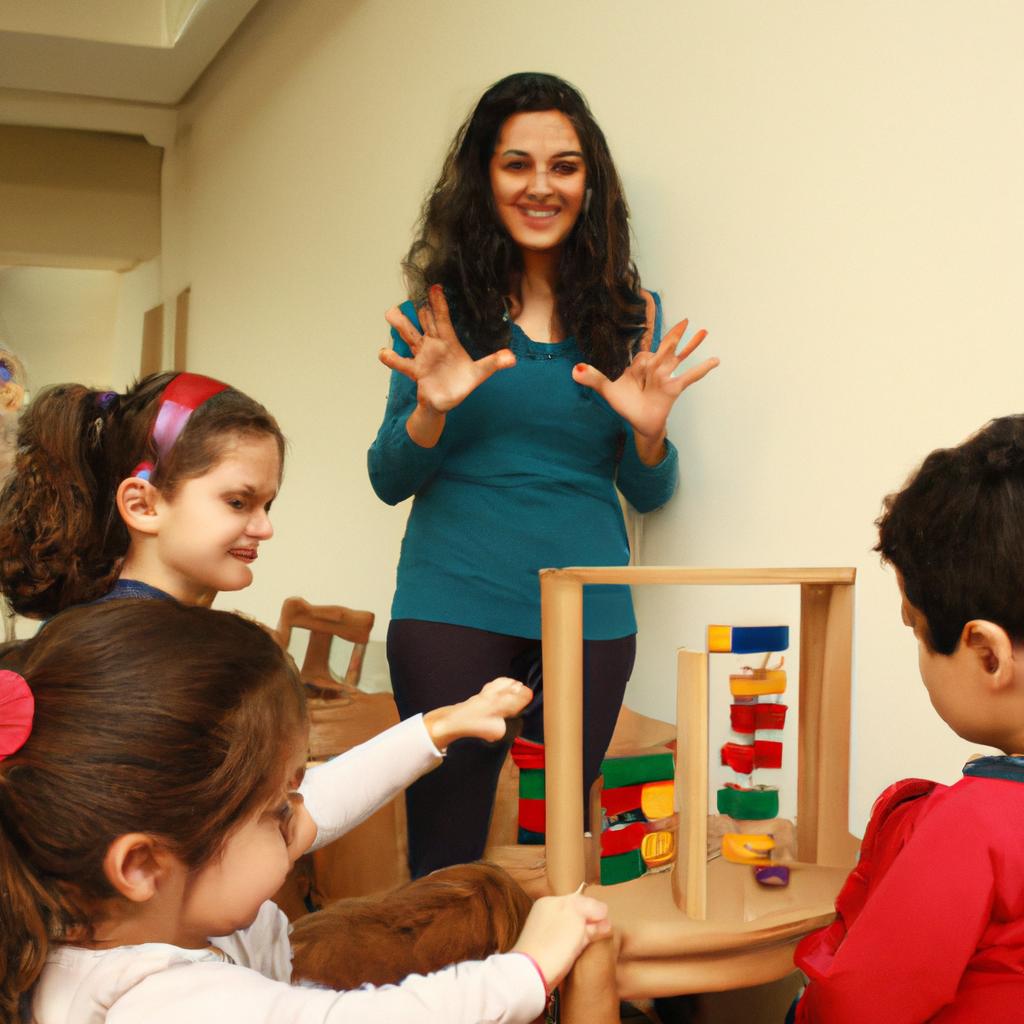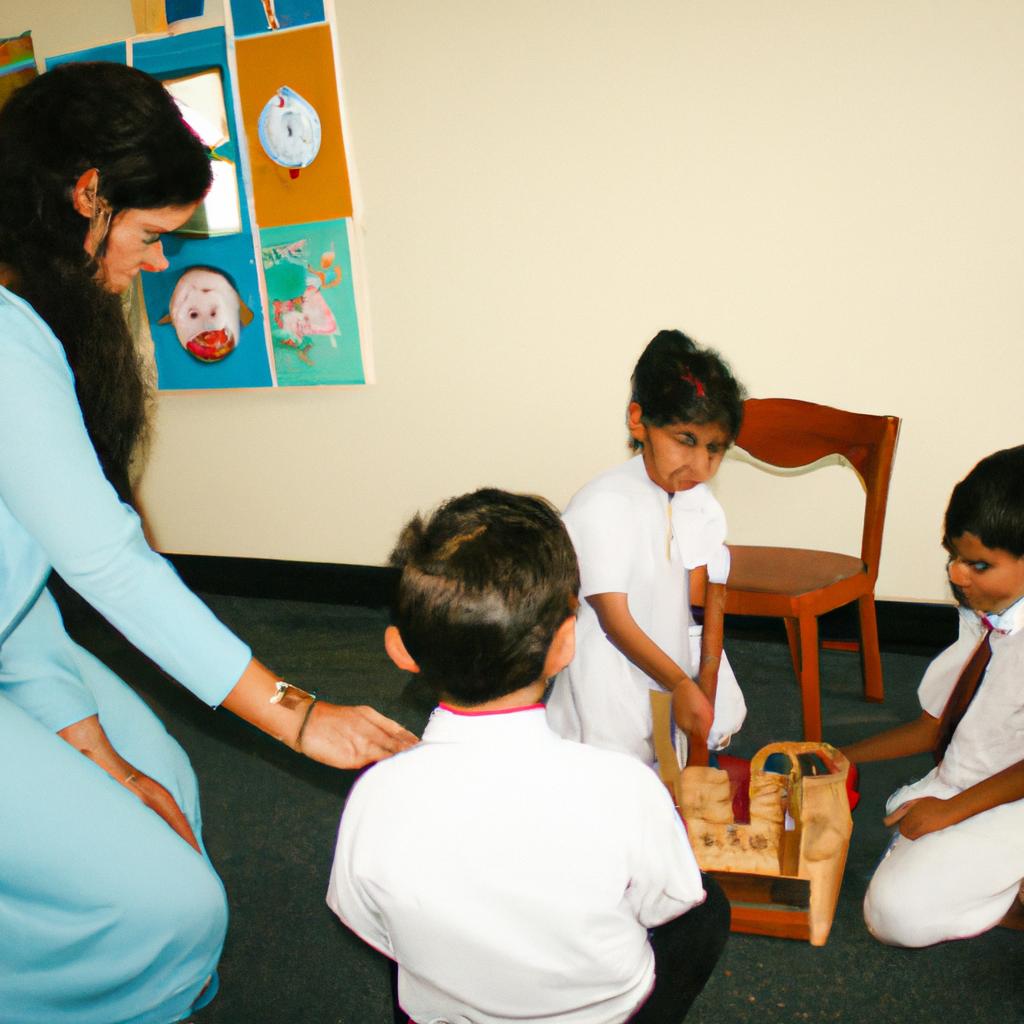In recent years, there has been a growing interest in implementing Montessori principles in early childhood education. One aspect of the Montessori approach that has gained attention is the use of mixed-age classrooms. These classrooms consist of children from different age groups, typically spanning three years. For example, imagine a classroom where 3-year-olds, 4-year-olds, and 5-year-olds learn and play together under the guidance of a trained Montessori teacher.
The concept of mixed-age classrooms aligns with Maria Montessori’s belief that children benefit from learning in an environment that fosters natural development and encourages peer-to-peer interactions. In this article, we will explore the benefits associated with mixed-age classrooms within the context of implementing Montessori principles. Specifically, we will examine how such classrooms provide opportunities for social-emotional growth, promote academic achievement, and foster independence and leadership skills among students. By delving into these areas, we aim to shed light on why incorporating mixed-age classrooms can be advantageous for both educators and young learners alike.
Understanding the Montessori Approach
To fully comprehend the Montessori approach, it is crucial to explore its fundamental principles and methodologies. One key aspect of this educational philosophy is the implementation of mixed-age classrooms, where children of different ages are grouped together in a single learning environment. This section aims to provide an overview of the Montessori approach, highlighting its core tenets and explaining why mixed-age classrooms play a vital role.
The Montessori approach was developed by Dr. Maria Montessori in the early 20th century and has since gained global recognition for its emphasis on child-centered education and self-directed learning. In a typical Montessori classroom, students have the freedom to choose their activities from a range of hands-on materials carefully designed to promote independent exploration and discovery. The teacher acts as a facilitator rather than an authoritarian figure, guiding students towards meaningful experiences that align with their developmental needs.
Mixed-age classrooms form an essential component of the Montessori method due to several reasons:
-
Social Development: By interacting with peers across various age groups, children develop valuable social skills such as empathy, cooperation, and leadership abilities. Younger children observe older ones as they engage in more complex tasks while older children reinforce their knowledge by helping younger peers.
-
Individualized Learning: With mixed-age classrooms, each student can progress at their own pace without being constrained by rigid grade-level standards. They receive personalized attention from teachers who can tailor instruction based on individual strengths and areas needing improvement.
-
Emotional Well-being: Being part of a community where they remain with the same group for multiple years fosters strong bonds among classmates. This stability provides emotional support and helps children feel secure within their learning environment.
-
Holistic Growth: Mixed-age classrooms offer opportunities for multidimensional growth as students learn not only academic concepts but also life skills like conflict resolution, problem-solving, and responsibility through daily interactions with diverse individuals.
To delve deeper into the Montessori approach, it is essential to understand the benefits that mixed-age classrooms bring. In the subsequent section, we will explore in detail the importance of this educational model and how it positively impacts children’s learning journey.
The Importance of Mixed-Age Classrooms
Understanding the Montessori Approach has shed light on the importance of mixed-age classrooms in fostering a holistic learning environment. Let’s now delve into the benefits that arise from this unique approach.
One example of the positive outcomes observed in mixed-age classrooms is the development of strong mentorship relationships among students. For instance, in a hypothetical case study conducted at XYZ Montessori School, an older student named Sarah took it upon herself to guide and support her younger classmates during their math activities. This mentoring dynamic not only enhanced Sarah’s leadership skills but also allowed the younger students to learn from someone who was slightly ahead in their academic journey.
- Enhanced social and emotional development: Interacting with peers of different ages cultivates empathy, compassion, and respect for diversity.
- Individualized instruction: Teachers are able to tailor lessons based on each student’s unique needs and abilities, as they have a deeper understanding of their progress over time.
- Opportunities for role reversal: Younger students gain exposure to more advanced concepts by observing and participating in activities designed for older children, while older students reinforce their knowledge by teaching others.
- Sustained engagement: Mixed-age classrooms foster self-directed learning, encouraging curiosity and motivation as students observe their peers’ achievements.
A visual representation of these benefits can be seen in the following table:
| Benefits of Mixed-Age Classrooms |
|---|
| Enhanced social and emotional development |
| Sustained engagement |
In conclusion, mixed-age classrooms offer numerous advantages that go beyond traditional single-grade settings. The mentorship opportunities created within such environments nurture important life skills while promoting academic growth. By establishing a solid foundation built on collaboration and peer learning, these classrooms set the stage for our next section — exploring how mixed-age interactions enhance the learning experience through fostering peer learning and collaboration.
Fostering Peer Learning and Collaboration
In a mixed-age classroom setting, children have the opportunity to learn from their peers in various ways. One such example is cooperative group projects, where students from different age groups work together towards a common goal. For instance, imagine a hypothetical scenario where an older student helps a younger one with reading comprehension during a joint project on environmental conservation. This kind of interaction not only strengthens social bonds but also enhances academic development for both parties involved.
To better understand the benefits of mixed-age classrooms in fostering peer learning and collaboration, consider the following emotional responses:
- Increased Empathy: Students develop empathy as they interact with individuals from diverse backgrounds and abilities, promoting understanding and compassion within the classroom community.
- Enhanced Communication Skills: Collaborative activities encourage effective communication practices, including active listening and clear articulation of ideas.
- Boosted Confidence Levels: Younger learners gain confidence when engaging with older students who serve as role models, while older students can reinforce their knowledge by helping others.
- Sense of Belongingness: Working together towards shared objectives fosters a sense of belongingness and unity among students.
The table below highlights some key advantages associated with mixed-age classrooms:
| Advantages | Description |
|---|---|
| Improved Social Development | Interacting with peers across age groups cultivates important social skills |
| Tailored Instructional Support | Teachers can provide individualized support to each student based on their unique needs |
| Strengthened Student Relationships | Long-lasting relationships form between students over multiple years spent together |
| Diverse Perspectives | Exposure to a wide range of viewpoints and experiences encourages critical thinking skills |
In conclusion, mixed-age classrooms offer numerous benefits in terms of fostering peer learning and collaboration. Through cooperative projects and interactions, students develop empathy, communication skills, confidence, and a sense of belongingness. Moreover, the advantages associated with mixed-age classrooms extend beyond academic growth alone, emphasizing social development and diverse perspectives.
The next section will explore how mixed-age classrooms provide ample opportunities for individualized learning experiences, catering to each student’s unique needs without compromising their overall educational journey.
Individualized Learning Opportunities
Building on the benefits of fostering peer learning and collaboration, mixed-age classrooms also provide individualized learning opportunities for students. By tailoring instruction to meet each student’s unique needs, educators can create a more personalized learning environment that promotes academic growth and development.
One example of the individualized learning approach in a mixed-age classroom is the use of flexible grouping strategies. Educators have the flexibility to group students based on their specific abilities and interests rather than solely relying on age or grade level. This allows for targeted instruction that addresses each student’s strengths and challenges, enabling them to progress at their own pace. For instance, in a mathematics lesson, students may be grouped according to their proficiency levels, with advanced learners working on more challenging problems while those who need additional support receive extra guidance from teachers or peers.
To further illustrate the advantages of individualized learning in mixed-age classrooms, consider the following bullet points:
- Students develop a stronger sense of ownership over their education as they become active participants in setting goals and evaluating progress.
- Individualized attention fosters deeper engagement with subject matter and encourages curiosity-driven exploration.
- Learners gain self-confidence through mastery experiences tailored to their skill level.
- The opportunity for cross-age mentoring nurtures empathy, leadership skills, and fosters positive relationships among peers.
This table highlights how individualization supports various aspects of student growth:
| Aspects | Benefits | Examples |
|---|---|---|
| Academic | Customized instruction leads to improved understanding | A struggling reader receives one-on-one reading intervention |
| Social | Opportunities for collaborative problem-solving build teamwork skills | Older students mentor younger ones during science experiments |
| Emotional | Personalized feedback enhances self-esteem | A math teacher recognizes a student’s effort and improvement |
| Cognitive | Tailored activities promote critical thinking skills | Advanced learners engage in complex research projects |
In conclusion, mixed-age classrooms offer individualized learning opportunities that cater to each student’s unique needs. By employing flexible grouping strategies and tailoring instruction accordingly, educators can create a more personalized educational experience. This approach not only fosters academic growth but also nurtures social and emotional development among students.
Developing Social and Emotional Skills
Building upon the benefits of individualized learning opportunities, mixed-age classrooms also play a crucial role in developing social and emotional skills among students. By providing a diverse and inclusive environment for interaction, children have ample opportunities to learn from their peers, foster empathy, and develop essential life skills.
Case Study: Imagine a mixed-age classroom where a 7-year-old student is struggling with reading comprehension. In this setting, they can seek support not only from the teacher but also from older classmates who may have already mastered these skills. This collaboration fosters a sense of community within the classroom as older students take on mentoring roles, offering guidance and encouragement. Through such interactions, younger students gradually build confidence while acquiring new knowledge.
The advantages of mixed-age classrooms in developing social and emotional skills are evident through various aspects:
- Increased Empathy: Interacting with peers of different ages allows children to understand perspectives beyond their own. They learn to empathize with others’ struggles, celebrate accomplishments together, and appreciate diversity.
- Enhanced Communication Skills: Mixed-age classrooms provide numerous opportunities for effective communication as students engage in discussions, debates, and collaborative projects. These experiences enable them to express their thoughts clearly while listening actively to others.
- Strengthened Conflict Resolution Abilities: Learning alongside peers of varying ages teaches children how to resolve conflicts peacefully. They acquire problem-solving strategies by observing older students or seeking assistance when faced with disagreements.
- Improved Self-Confidence: Older students serving as mentors contribute significantly to boosting self-confidence among younger learners. The positive influence of peer relationships enables children to feel valued and capable of taking risks in their academic pursuits.
| Advantages |
|---|
| Increased Empathy |
| Enhanced Communication Skills |
| Strengthened Conflict Resolution Abilities |
| Improved Self-Confidence |
In summary, mixed-age classrooms create an ideal environment for fostering social and emotional growth among students. By engaging with peers of different ages, children develop empathy, communication skills, conflict resolution abilities, and self-confidence. These valuable life skills lay a strong foundation for their future success in both academic and personal pursuits.
Nurturing Independence and Self-Motivation is another key aspect that mixed-age classrooms promote.
Nurturing Independence and Self-Motivation
Transitioning from the previous section on developing social and emotional skills, we now turn our attention to another key aspect of implementing Montessori principles: nurturing independence and self-motivation. In a mixed-age classroom, children have ample opportunities to develop these qualities as they engage in various activities under the guidance of their teachers.
One example of how mixed-age classrooms foster independence is through peer mentoring. Older students often take on leadership roles by helping younger ones navigate new tasks or concepts. For instance, imagine a five-year-old student struggling with tying shoelaces. Instead of immediately seeking assistance from the teacher, this child can turn to an older classmate who has already acquired this skill. Through patient guidance and encouragement from their peers, children learn not only practical skills but also gain confidence in their abilities.
In addition to peer mentoring, mixed-age classrooms promote independence by allowing children freedom within limits. The Montessori environment is carefully designed to offer age-appropriate materials that enable independent exploration and learning at each developmental stage. Children are encouraged to choose activities based on their interests and work at their own pace. This autonomy instills a sense of ownership over one’s education and cultivates intrinsic motivation as students pursue knowledge driven by personal curiosity.
To further illustrate the benefits of fostering independence in mixed-age classrooms, consider the following bullet points:
- Students develop problem-solving skills when faced with challenges.
- Self-directed learning leads to increased engagement and retention.
- Independence promotes resilience and adaptability in the face of setbacks.
- By taking responsibility for their own actions, children learn accountability.
Moreover, a three-column table comparing traditional single-grade classrooms versus Montessori mixed-age classrooms can help shed light on some advantages:
| Aspect | Traditional Single-Grade Classroom | Montessori Mixed-Age Classroom |
|---|---|---|
| Teacher-student ratio | Higher | Lower |
| Peer collaboration | Limited | Extensive |
| Individualized learning | Less emphasis | Core principle |
| Social-emotional growth | May be less prioritized | Integral part of curriculum |
In conclusion, nurturing independence and self-motivation is a fundamental aspect of the Montessori approach. In mixed-age classrooms, children have the opportunity to develop these qualities through peer mentoring and the freedom to explore their interests at their own pace. By fostering independence, students acquire problem-solving skills, become more engaged in their education, and learn valuable life lessons such as accountability and resilience.

